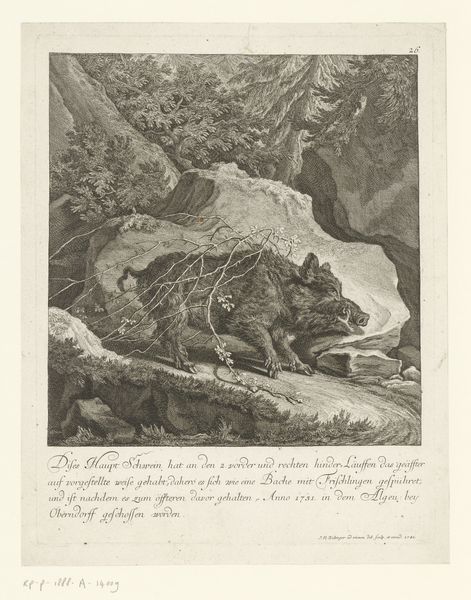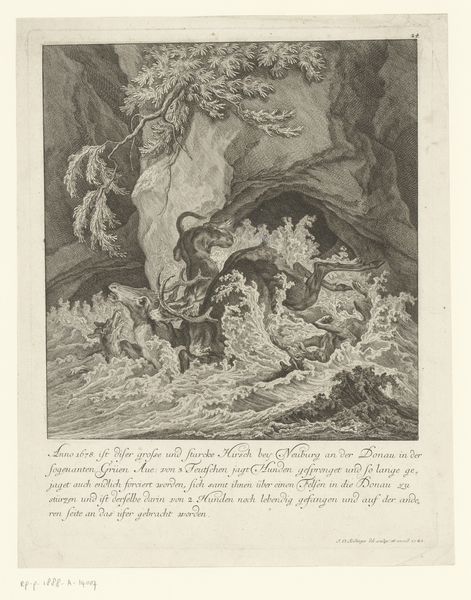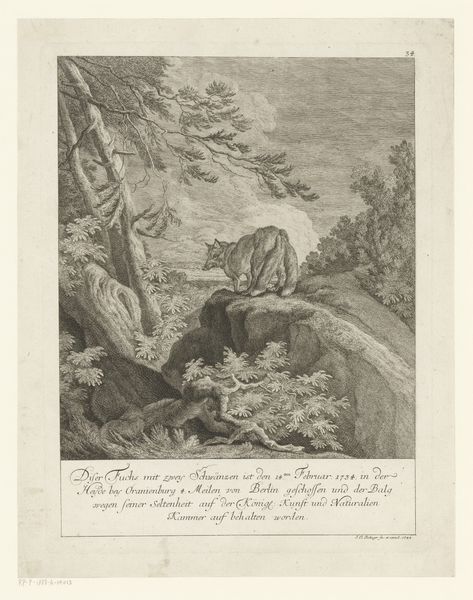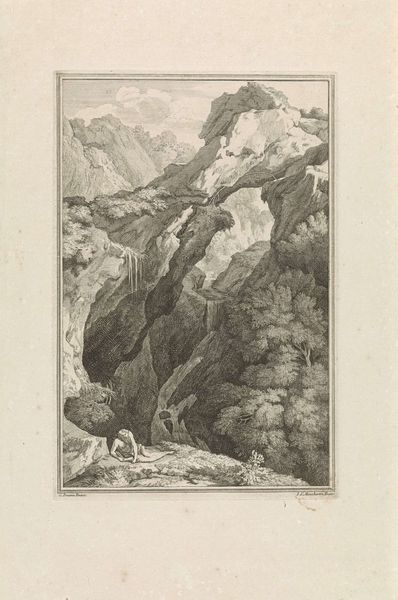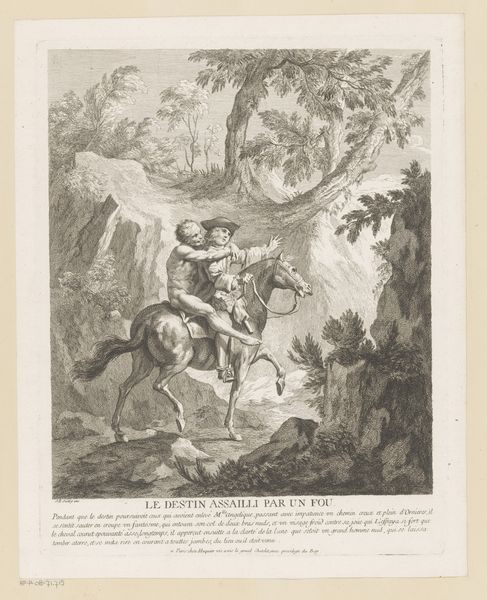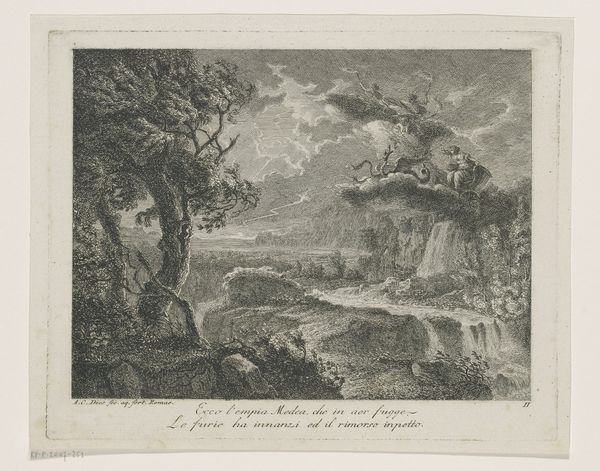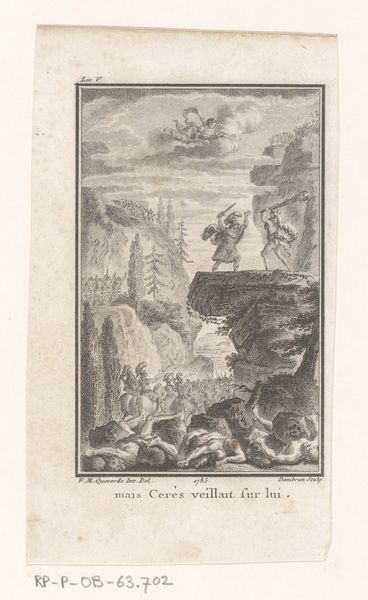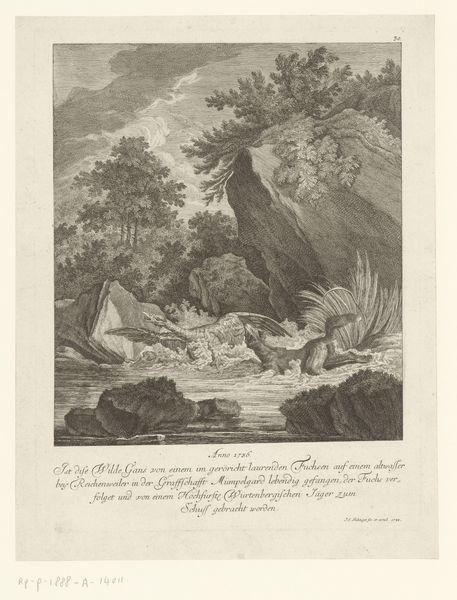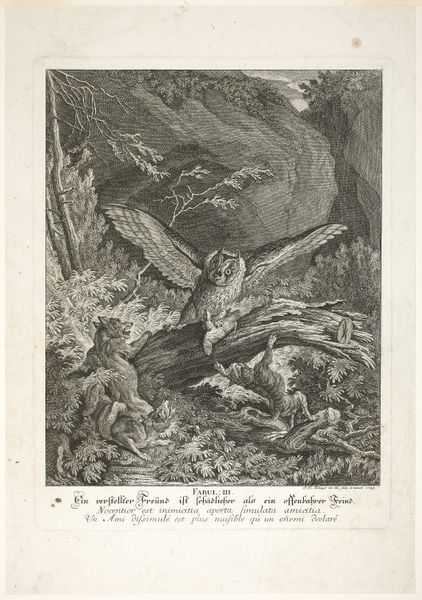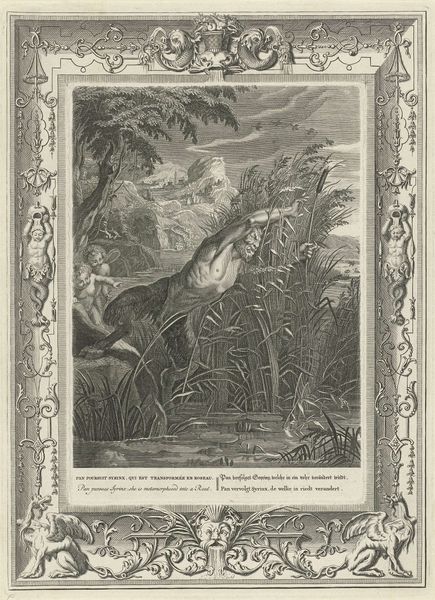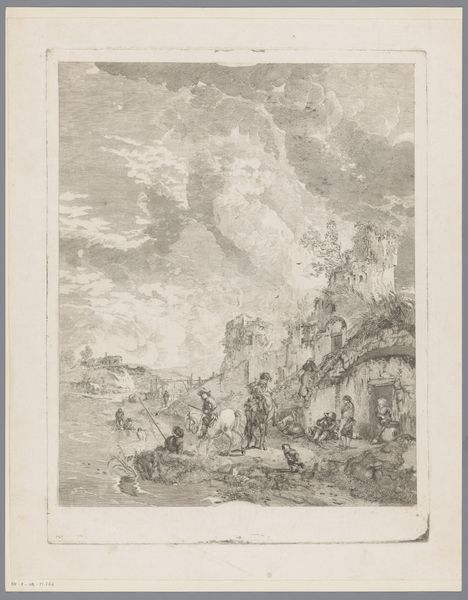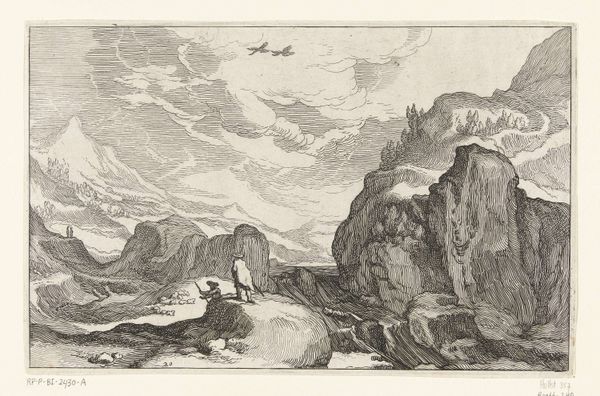
Dimensions: height 373 mm, width 295 mm
Copyright: Rijks Museum: Open Domain
Editor: This is "Bijzonder grote arend en een dode gems," or "An Enormous Eagle and a Dead Chamois," from 1741, created by Johann Elias Ridinger. It's an engraving, and… well, it's pretty dramatic. All sharp angles and looming rock faces. What strikes you when you look at it? Curator: Ah, Ridinger! He’s speaking to us, isn’t he? He’s showing us, with utter certainty, that primal drama. Think about the era. We’re in the Baroque, yes, but simmering beneath is this German Expressionist impulse. This raw confrontation with nature... It's not just depicting; it's *feeling*. Do you sense that intensity? Editor: Definitely. The eagle looks incredibly fierce, and the chamois... lifeless. There’s a real contrast, a struggle being depicted. Is there any symbolic meaning behind the choice of animals? Curator: Well, traditionally, the eagle is power, kingship, dominance. The chamois is vulnerability. Ridinger stages them in this operatic, theatrical setting...He might be speaking to us about the natural order, the precariousness of life, perhaps even hinting at human ambition and its consequences. Editor: It’s interesting how it walks the line between natural observation and almost theatrical drama. Curator: Precisely! Look how meticulously he renders the eagle’s feathers, yet the composition...that feels deliberately arranged, doesn't it? To amplify the drama! He's creating more than illustrating. Editor: So, what started as what seemed a straightforward depiction is actually loaded with meaning and emotion. I wouldn't have caught all of that! Curator: And that’s the fun of it, isn’t it? We can engage on every level: technically, historically, personally. Each look reveals another layer.
Comments
No comments
Be the first to comment and join the conversation on the ultimate creative platform.
